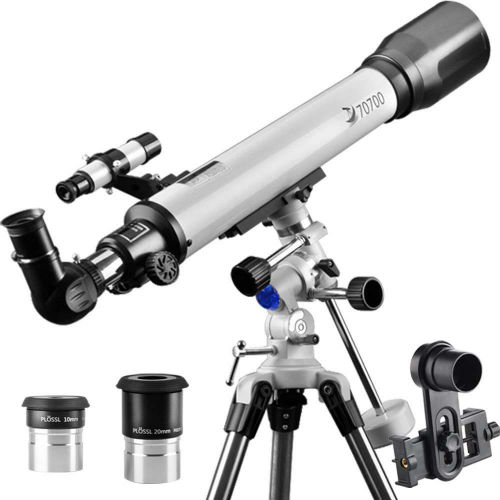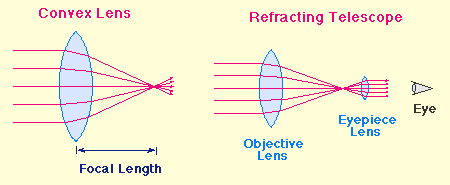
The longer it is, the longer the refracting telescope. Focal length, on the other hand, is the distance between the point of focus of the rays and the lens. The larger it is, the more objects you can see and the more detailed the image. The diameter of the lens determines the number of rays it can catch. However, you must take care to choose the optimal instrument.
#REFRACTOR TELESCOPE LENSES PROFESSIONAL#
Amateur telescopes do not have the same range as professional equipment, but they are great for watching our solar system. On them depends the quality of the image, which is, after all, crucial in admiring the sky and planets. Observation of various types of space objects requires a telescope with the right parameters. The most important parameters of refractor telescope Its quality is also affected by the parameters of the particular equipment, such as focal length, lens diameter or even the type of mount used. In a Kepler telescope, the focal length of the eyepiece is positive, which results in an inverted image. Galileo's telescope uses an eyepiece with a negative focal length and produces a straight image. There are two types of refracting telescopes, named after their originators. However, here we will focus mainly on refracting telescopes.

There is also a second type of telescopes, which use mirrors instead of lenses. Observations of the sky and planets are possible just thanks to telescopes. Things that we would not be able to see with the naked eye, we can see with a telescope. Objects become brighter and clearer, and the image is also magnified, so we can get a closer look at them. Rays of scattered light emitted or reflected by celestial bodies enter the lens, and are then focused by the lens through refraction. Refractor telescopes consist of a objective (lens) and an telescope eyepiece, which are connected by a tube. If you are wondering whether it is worth buying this type of telescope, we will be happy to advise you on which elements you should pay your attention to. Telescopes can also be successfully used in astrophotography, that is, capturing stars and planets in photographs.

They were constructed as early as the 17th century, and since then they have been still used by both scientists and novice enthusiasts of the solar system and the objects within it.

The first tools used in astronomy were refractors. Refracting telescopes, also called refractors, are used by us to observe the sky.


 0 kommentar(er)
0 kommentar(er)
